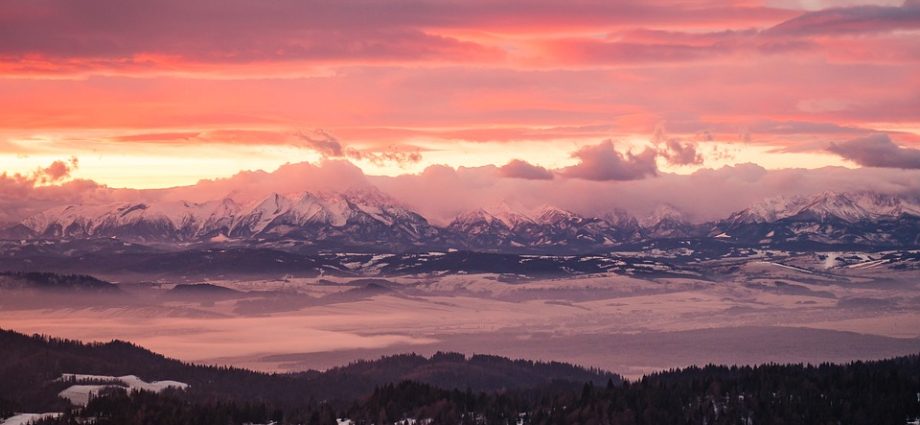HEADER: Poland’s Economic Growth: How the Country is Becoming a Major Player in Europe
Poland has long been associated with conflict and turmoil, with its history being characterized by political and social unrest. However, the country is quickly becoming a force to be reckoned with in the European economic scene. Over the past decade, Poland has made great strides in its economic growth, expanding beyond its traditional agricultural base and tapping into the technology sector. In this article, we will explore the factors that have contributed to Poland’s economic growth and examine the top tourist attractions in the region.
Header: The Factors that Contributed to Poland’s Economic Growth
1. Strategic Location: Situated at the crossroads of Europe, Poland occupies an important economic position. Its close proximity to major European economies and its status as a gateway to the East have made Poland an attractive destination for foreign businesses.
2. Political Stability: After decades of political turmoil, Poland began to experience political stability in the late 1990s. This enabled the country to attract foreign investment and create policies that fostered economic growth.
3. Skilled Labor Force: Poland has a highly skilled and educated labor force, with an emphasis on science and technology education. This has enabled the country to position itself as a leader in the technology sector, attracting major IT firms such as Intel, Google, and Microsoft.
4. Efficient Infrastructure: Poland has invested heavily in its infrastructure, including its transport and energy networks. This has enabled businesses to operate efficiently and effectively in the country.
Header: Top Tourist Attractions in Poland
1. Krakow: With its charming old town, stunning architecture, and rich cultural heritage, Krakow is undoubtedly one of the top tourist attractions in Poland. Visitors can explore Wawel Royal Castle, the Main Square, and the Jewish Quarter, among other sights.
2. Warsaw: Poland’s capital city has plenty to offer visitors, from its vibrant nightlife to its museums and galleries. Must-see attractions include the Palace of Culture and Science, the Old Town, and the Warsaw Uprising Museum.
3. Gdańsk: Located on the Baltic coast, Gdańsk is a picturesque city that boasts a rich maritime history. Visitors can explore the medieval old town, tour the shipyards, and admire the city’s iconic Neptune Fountain.
4. Wroclaw: Known as the “Venice of the North,” Wroclaw is a charming city that features over 100 bridges and numerous islands. Visitors can take a boat tour of the Odra River, explore the city’s many churches, and stroll through the Market Square.
5. Zakopane: Nestled in the Tatra Mountains, Zakopane is a popular destination for skiing and hiking. Visitors can take a cable car to the top of Mount Kasprowy, explore the town’s traditional wooden houses, and sample local delicacies such as oscypek cheese.
6. Tatra National Park: This stunning national park is home to rugged mountain peaks, crystal-clear lakes, and ancient forests. Visitors can go hiking, biking, or horseback riding through the park, or simply relax and enjoy the beautiful scenery.
7. Malbork Castle: This impressive medieval fortress is the largest brick castle in the world and is a UNESCO World Heritage Site. Visitors can explore the castle’s many rooms, admire its stunning architecture, and learn about its history.
8. Bialowieza Forest: This ancient forest is one of the last remaining primeval forests in Europe and is home to a range of rare and endangered species, including the European bison. Visitors can go hiking, cycling, or bird watching through the forest.
9. Auschwitz-Birkenau: This former concentration camp is a haunting reminder of the atrocities committed during the Holocaust. Visitors can explore the camp’s many barracks, gas chambers, and crematoria and learn about the lives of the prisoners who were held there.
10. Slowinski National Park: Located on the Baltic coast, this national park features breathtaking sand dunes, shimmering lakes, and dense forests. Visitors can go hiking, bird watching, or simply relax on the beach.
Header: FAQs
1. What is the currency used in Poland?
The currency used in Poland is the Polish zloty (PLN).
2. What is the best time to visit Poland?
The best time to visit Poland is during the summer months (June to August), when the weather is warm and sunny. However, this is also the busiest time of year, so be prepared for crowds.
3. Is Poland a safe country to visit?
Yes, Poland is generally a safe country to visit. However, like any country, there are areas that can be dangerous, so it’s important to exercise caution and be aware of your surroundings.
4. Can I get by with English in Poland?
Yes, many people in Poland speak English, particularly in tourist areas. However, it’s always a good idea to learn a few basic phrases in Polish, such as “hello” and “thank you.”
5. What are the top tourist attractions in Poland?
Some of the top tourist attractions in Poland include Krakow, Warsaw, Gdańsk, Wroclaw, Zakopane, Tatra National Park, Malbork Castle, Bialowieza Forest, Auschwitz-Birkenau, and Slowinski National Park.
